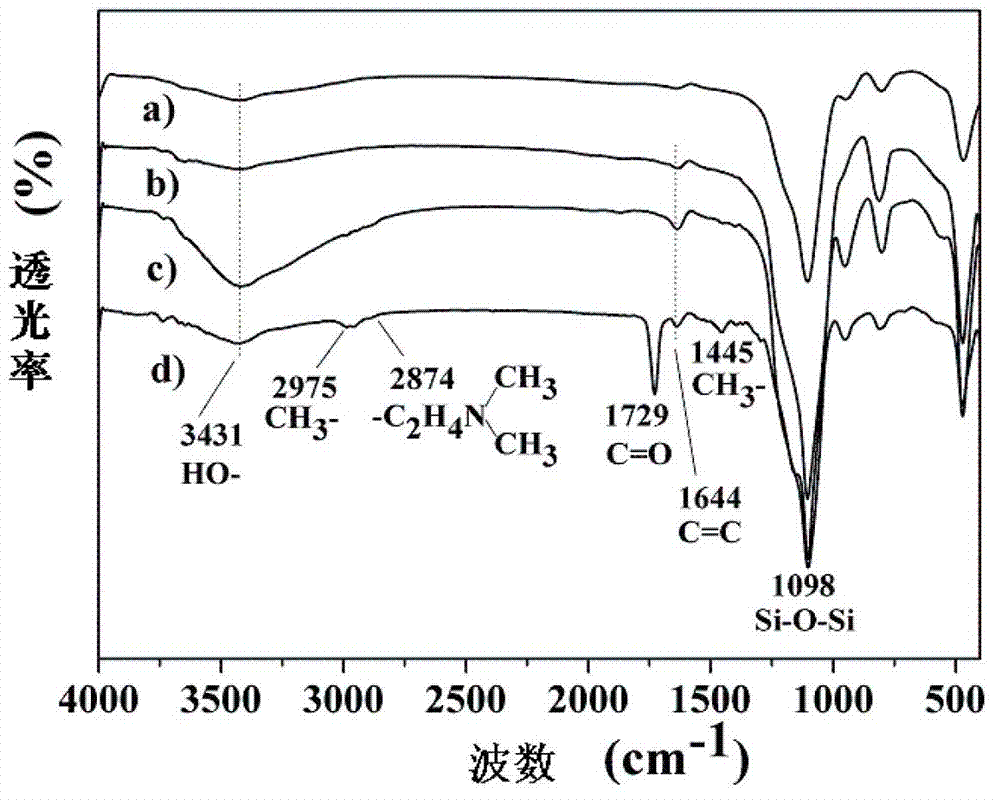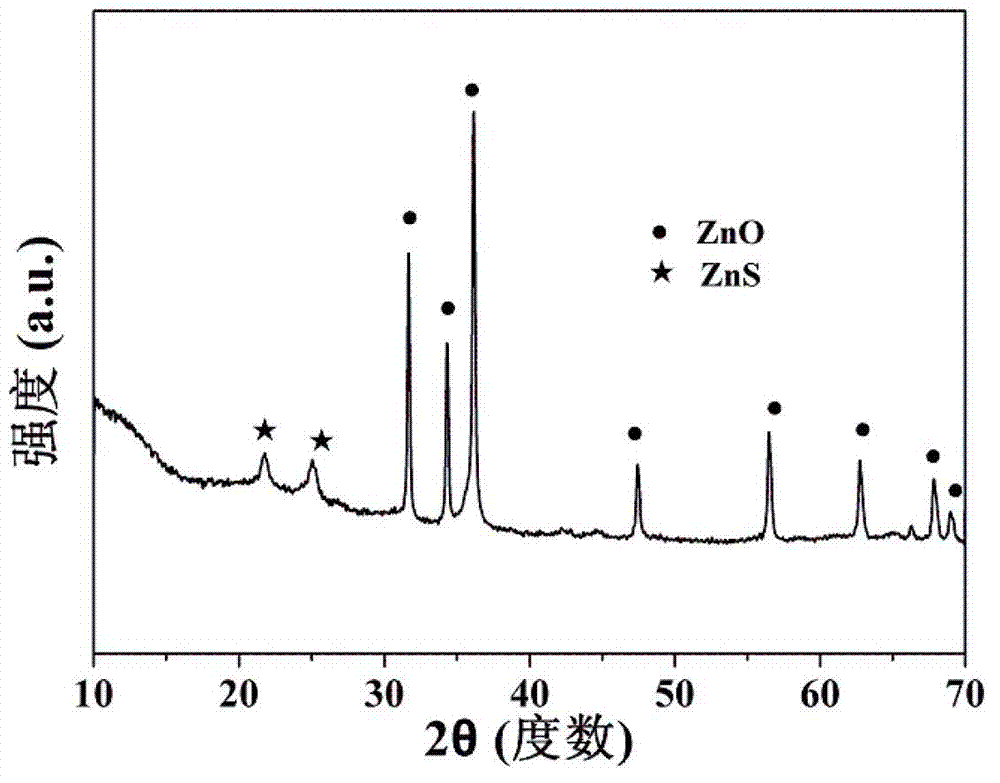Preparation method and application of molecularly imprinted polymer of sulfadiazine for controlled catalytic degradation
A sulfadiazine, catalytic degradation technology, applied in chemical instruments and methods, chemical/physical processes, physical/chemical process catalysts, etc., to achieve controllable catalytic degradation and good regeneration performance.
- Summary
- Abstract
- Description
- Claims
- Application Information
AI Technical Summary
Problems solved by technology
Method used
Image
Examples
Embodiment 1
[0036] Embodiment 1: (1) SiO 2 Synthesis of nanoparticles: Mix 32.5mL of absolute ethanol, 49.5mL of distilled water and 18mL of concentrated ammonia water evenly, stir magnetically at 1000rpm for 2min, then add 91mL of absolute ethanol and 9mL of tetraethyl orthosilicate to the above mixed solution, room temperature Stir at 400rpm for 2.0h, wash with absolute ethanol several times after high-speed centrifugation, and dry at room temperature in vacuum to obtain SiO 2 Nanoparticles.
[0037] 2)SiO2 2 / ZnO / ZnS nanoparticles preparation: 2g SiO 2 Nanoparticles were dispersed in a mixed solution of 40 mL of absolute ethanol and 60 mL of distilled water, heated to 90 °C under stirring at 400 rpm, and 1.1 g of zinc acetate, 0.75 g of thioacetamide and 5.32 mL of triethylamine were added after 10 min, and the mixed solution was Heating with magnetic stirring at 90°C for 1h, the obtained product was dried and calcined in a resistance furnace at 700°C for 3 hours, and the light yell...
experiment example 1
[0044] Experimental example 1: Using the imprinted catalytic material and non-imprinted catalytic material prepared in the actual amount above, using adsorption synergistic catalysis, prepare 200 mL of sulfadiazine solution with an initial concentration of 0.1 mmol / L, and adjust the pH value to 7.0; weigh 0.2 g Imprinted and non-imprinted catalytic materials are added to the sulfadiazine solution, the temperature of the catalytic system is controlled at 15°C, and the ultraviolet light source and tungsten lamp (visible) light source are used to irradiate, and the residual concentration of sulfadiazine in the reaction system at different times is measured to calculate and obtain The amount of sulfadiazine degraded.
[0045] The degradation rate was calculated by the following formula:
[0046]
experiment example 2
[0047] Experimental Example 2: Using the imprinted catalytic material and non-imprinted catalytic material prepared in the above actual dosage, prepare 200 mL of sulfadiazine solution with an initial concentration of 0.1 mmol / L, and adjust the pH value to 8.0; weigh 0.2 g of imprinted and non-imprinted catalytic materials respectively Add the material into the sulfadiazine solution, control the temperature of the catalytic system at 45°C, irradiate with an ultraviolet light source and a tungsten lamp (visible) light source, measure the residual concentration of sulfadiazine in the reaction system at different times to calculate the amount of degraded sulfadiazine .
[0048] The following is a detailed description of each accompanying drawing:
[0049] figure 1 For silicon spheres (a), SiO 2 / ZnO / ZnS nanoparticles (b), RAFT reagent functionalized SiO 2 Fourier transform infrared spectra of / ZnO / ZnS nanoparticles (c) and imprinted polymers (d). From the infrared image of the...
PUM
| Property | Measurement | Unit |
|---|---|---|
| Thickness | aaaaa | aaaaa |
Abstract
Description
Claims
Application Information
 Login to View More
Login to View More - R&D
- Intellectual Property
- Life Sciences
- Materials
- Tech Scout
- Unparalleled Data Quality
- Higher Quality Content
- 60% Fewer Hallucinations
Browse by: Latest US Patents, China's latest patents, Technical Efficacy Thesaurus, Application Domain, Technology Topic, Popular Technical Reports.
© 2025 PatSnap. All rights reserved.Legal|Privacy policy|Modern Slavery Act Transparency Statement|Sitemap|About US| Contact US: help@patsnap.com



